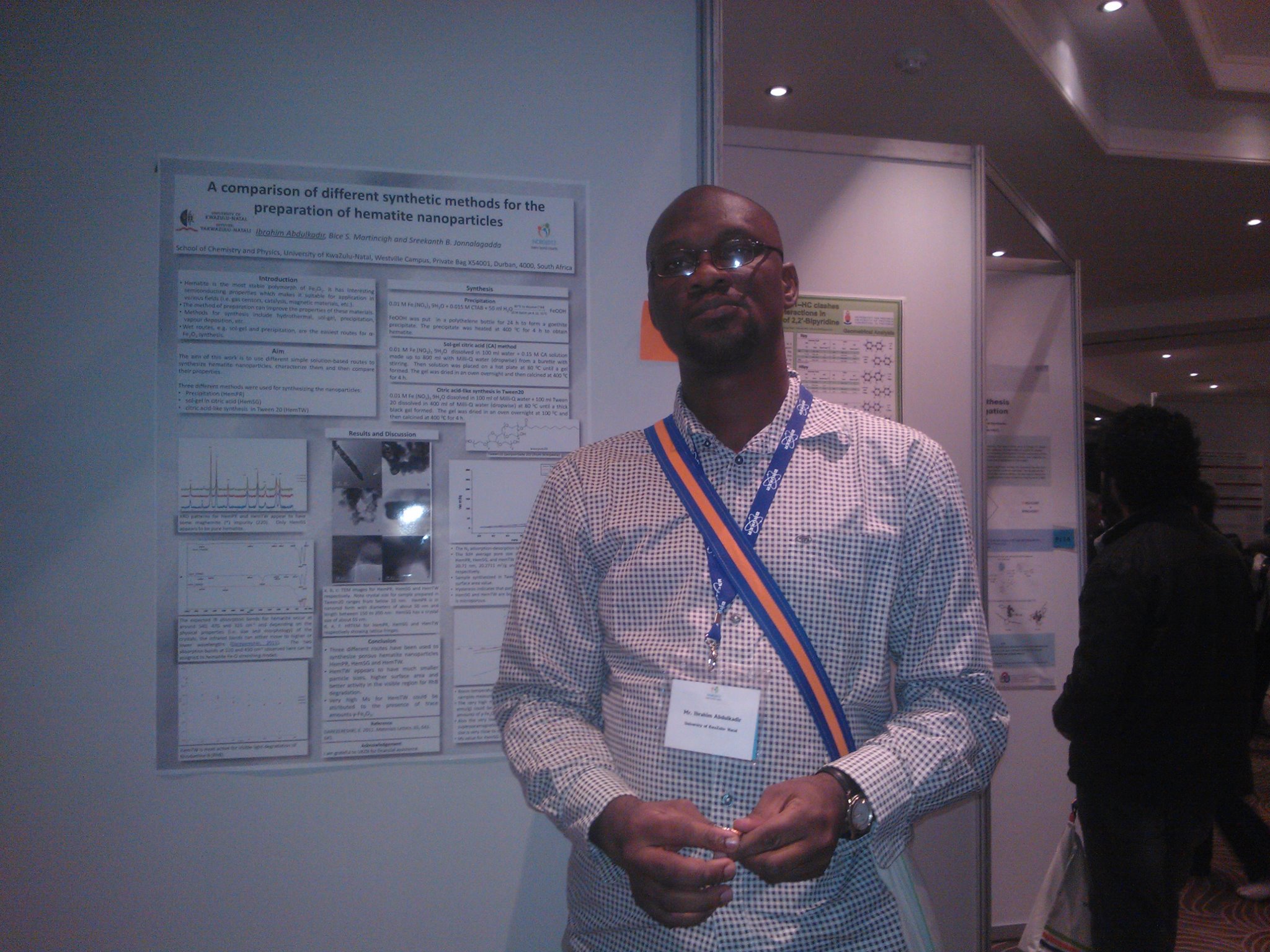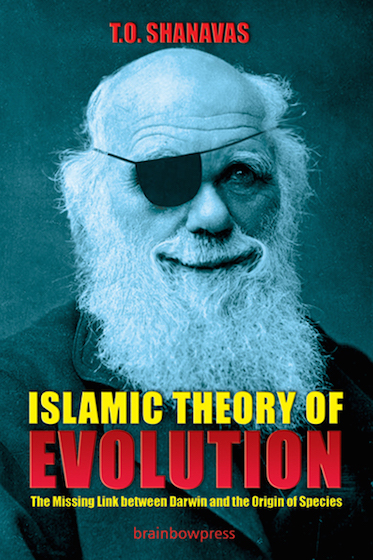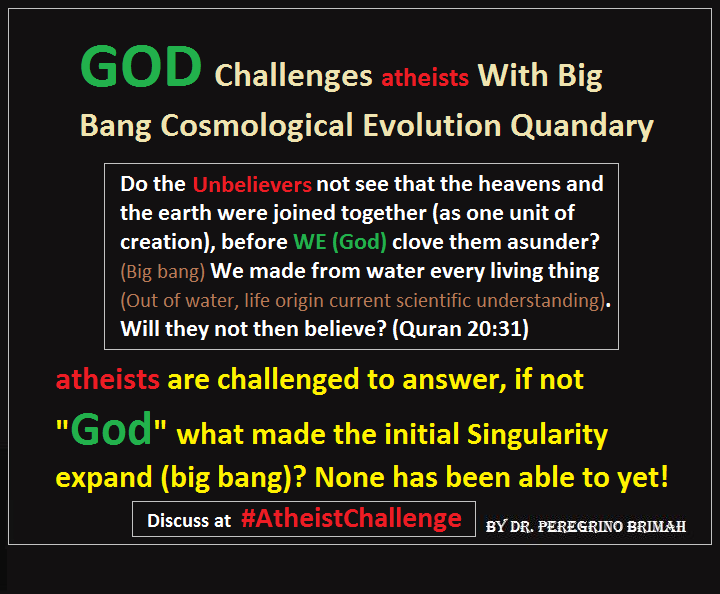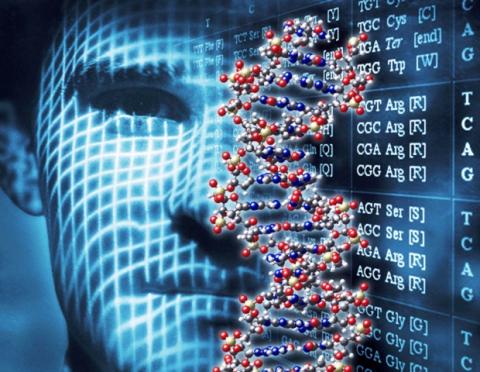written by Ibraheem Waziri,
Last week, Malam Ibraheem A. Wazeer posted a conversation between himself, Prof. Kabir Banu Azzubair and the Islamic scholar Sheikh Ibrahim Almaqari. The conversation centered around the facts of theory of evolution and its roots in Islamic literature. After reading a follow-up post in Hausa, I decided that I would do a quick response to both posts in order to promote the conversation on the theory of evolution, highlight its flaws, and then put a hole in the holiness of the theory. My position in this post is not borne by religious conviction or faith. Even if I was faithless or irreligious, I would still stand by my convictions as contained in this post because they are a product of diligent studies and simple logic. I would like to apologise in advance as this might be a little bit longish and please, feel free to contribute.
The concept of evolution actually predates Darwin and I am glad that it is being mentioned here. It even predates our own Al-Jaahidh (the black muslim scholar with protruding eyes) whose work (kitaabul hayawan; meaning the book of animals) is being quoted here. Its roots lie in ancient Greece (perhaps even much earleir) and the philosopher Anaximander stands out as a precursor to modern evolutionary thoughts. It is an old pagan ideology. Darwin’s contemporaries Lamarck and Lyell have all written concerning their own evolutionary thoughts. Erasmus Darwin, Darwin’s grandfather had already formulated evolutionary views of his own and even Darwin, some say, believed in evolution long before his voyage to the Galapagos, all he did in his origin of species was to, as someone puts it cut the feet to fit the shoes and ever since scientist belonging to the camp of neo-Darwinism have been doing exactly the same thing with scientific data. Charles Darwin though takes the credit for working out a seemingly plausible mechanism by which evolution was suppose to occur. The mechanism that was described simply as random variation being acted upon by natural selection. With the advancement of science in the field of genetics, scientist reworked this theory and gave us what would come to be known as the modern synthesis. The new mechanism is not different from the old one in substance, only in minor details and so could be considered as the unravelling of the mysteries of the theory of the origin of species. The modern synthesis gave us the word ‘random mutation’ to better describe the process by which animal speciation is initiated. These two processes of random mutation and natural selection are, today, the accepted mechanisms by which evolution is said to occurs. In his book ‘why Evolution is true’ Professor Jerry Coyne, under the heading ‘What is Evolution’ gives us a crystal clear definition of what Neo-Darwinist mean when they use the word Evolution. He says:
“In essence, the modern theory of evolution is easy to grasp. It can be summarized in a single (albeit slightly long) sentence: Life on Earth evolved gradually beginning with one primitive species—perhaps a self-replicating molecule—that lived more than 3.5 billion years ago; it then branched out over time, throwing off many new and diverse species; and the mechanism for most (but not all) of evolutionary change is natural selection.”
Explaining further he says:
“When you break that statement down, you find that it really consists of six components: evolution, gradualism, speciation, common ancestry, natural selection, and nonselective mechanisms of evolutionary change.”
Evolutionists generally try to exclude abiogenesis (how life was originally obtained from inorganic non-life substances) from their theory even though some audacious origin of life researchers have tried to come up with some propositions.
The theory though is not without its dissenters and for very good reasons, in fact, a co-discoverer of the theory, Alfred Russell Wallace would later become one of the fiercest critic of the theory based on Darwin’s insistence that the evolutionary progression leading up to the evolution of human was all a product of unguided chance. Wallace. Though not a Christian, believed that evolution may have been responsible for the arrival of species but did not believe that it was undirected. He enumerated several morphological features which could not be explained by natural selection on the strict prescription of the principle of utility and then asserted:-
“Let us fearlessly admit that the mind of man (itself the living proof of a supreme mind) is able to trace, and to a considerable extent has traced, the laws by means of which the organic no less than the inorganic world has been developed. But let us not shut our eyes to the evidence that an Overruling Intelligence has watched over the action of those laws, so directing variations and so determining their accumulation, as finally to produce an organization sufficiently perfect to admit of, and even to aid in, the indefinite advancement of our mental and moral nature.” (Wallace 1869).
- Related: NewsRescue-The #AlmightyProtocell Challenge To The Unguided Evolution Theory
Another fierce and very early critic of Mr Darwin, after examining and analyzing the theory of transmutation (as they then referred to it) reckoned:-
“In the theory with which we have to deal, Absolute Ignorance is the artificer; so that we may enunciate as the fundamental principle of the whole system, that, in order to make a perfect and beautiful machine, it is not requisite to know how to make it. This proposition will be found, on careful examination, to express, in condensed form, the essential purport of the Theory, and to express in a few words all Mr. Darwin’s meaning; who, by a strange inversion of reasoning, seems to think Absolute Ignorance fully qualified to take the place of Absolute Wisdom in all the achievements of creative skill.” (Robert Beverly MacKenzie: The Darwinian theory of the transmutation of species Examined p 295).
We could go back and forth with respect to what it was that influenced and sustained the popularity of Mr Darwin’s theory of evolution in his days but that is not of interest to this discussion. What is of interest to us here is the validity of the theory and weather it is the science that has been sustaining its popularity or is there something else. Do we have a clear-cut evidence for the theory of evolution. What you can call a conclusive scientific evidence, no conjecture, no stretching of inferences and no arbitrary extrapolations. For even if evolution truly happened, scientists can only make such a claim when the mechanism at work has been clearly and unambiguously identified. The answer to these questions unfortunately, is a big NO.

When scientists discuss evolution, firstly, they generally usually try to conflate two or three distinct ideas and then by way of extrapolation, arrive at an extravagantly deceitful conclusion about the powers of the theory of evolution. The first idea is microevolution which is in fact your good old variation. Nobody disputes microevolution, it happens all over and animal breeders do it all the time. They make varieties of animals within the same species depending on what traits they intend to emphasize, but they also know that there is a boundary beyond which they cannot cross. The animal rather simply falls back to the center. For example you cannot produce a dock by selecting genes from a chicken. Microevolution is a fact but it does not produce any new species. The second, which can also be lumped with the first is descent with modification (not in the general sense of a fish gradually morphing into an ape). We know humans look different from their parents and grandparents due to certain few modifications in their gene type as compared to those of their granparents. This differences do not temper with their alignable DNA sequence, they are simply as a result of mixing of alleles (different variants of the same gene) which gives rise to the little variations in things like complexion, height, eye colour, freckles, dimples colour blindness etc. In essence, these variants only play around very tertiary characteristics to determine whether you’re a prettier or healthier version of your parents. These types of changes go round in circles and is ineffective in bringing about any new species. Evolution, with this meaning is also a fact and no matter how long you allow the differences to accumulate we will still be 99.99% identical in all our alignable DNA sequence. No new species formed. The third meaning of evolution forms the springboard for the blind watchmaker thesis. It is the idea that all living organisms have descended from a single ancestor via unintelligent, purposeless and unguided processes such as random mutations and natural selection. This is macroevolution (see Coyne’s definition above) and there are no scientific evidences whatsoever to show that this type of evolution has happened. Evolutionist try to use observations from the capability of the mechanism in the first two instances and then make extrapolations to arrive at the third. This is a leap of faith, it simply does not happen and developmental biologists know this. Michael Lynch, a geneticist, an evolutionary biologist at the Indiana University and a critic of evangelical fundamentalism of dogmatic evolutionists has this to say in respect of people like Coyne:-
“…the uncritical acceptance of natural selection as an explanatory force for all aspects of biodiversity (without any direct evidence) is not much different than invoking an intelligent designer (without any direct evidence). True, we have actually seen natural selection in action in a number of well-documented cases of phenotypic evolution (Endler 1986; Kingsolver et al. 2001), but it is a leap to assume that selection accounts for all evolutionary change, particularly at the molecular and cellular levels. The blind worship of natural selection is not evolutionary biology. It is arguably not even science. Natural selection is just one of several evolutionary mechanisms, and the failure to realize this is probably the most significant impediment to a fruitful integration of evolutionary theory with molecular, cellular, and developmental biology.” (Michael Lynch: The Origins of Genome Architecture. Sinauer, 2007, pp. 368-9).
Generally, in arriving at the conclusions of the theory of evolution two types of ‘sciences’ are usually merged to create the narrative of events leading up to the present. The first of these two is the empirical science, which consist of data collection, observation, experimentation etc and real scientific skills are required for these. But this is where the good science stops. The second bit is where the scientist makes his inference. In evolutionary studies, the inferences made are more like historic science, an attempt at reconstructing the past. But inferences are not demonstrative of anything and this is where all the speculations and wishful thinking come into play. Your success in this area depends on your propensity for wild imagination and your prowess at storytelling. So with a good power of imagination and a mastery of the art of storytelling using different types of powerful artist impressions and visuals, a strong mental picture of the evolution stories can be created in people’s heads, kids are especially vulnerable to this method of brainwashing and the contents of these stories have no scientific value whatsoever. This may come to some as a rude shock but an example or two may suffice and the best area to find this would be in evolutionary palaeontology. In the field of evolutionary palaeontology, a single tooth find could be used to reconstruct the body of a whole animal. The Nebraska man (please read the full stories of the Piltdown man and the Nebraska man and Neanderthal man ) was reconstructed from a single tooth find that was alleged to have characteristics common to man and apes. But when later the remnant of the fossil was found, it was discovered that the tooth actually belonged to a wild pig. Piltdown man (probably the greatest hoax of the last century) was reconstructed from a jaw bone and a skull fragment that were found in a pit in Piltdown, England. It was alleged to be 500,000 years old and some even allege that 500 academic PhD were obtained promoting Piltdown man as a missing link in the human evolutionary chain before it was discovered to be a fake. You begin to wonder, just what manner of science is this where a single tooth or a jaw bone could be used to reconstruct an extinct animal, one that you have never seen for that matter in fact no one has ever seen. Also, please watch a 9 min. youtube clip (titled Whale evolution vs actual fossil evidence) of a palaeontology Professor, Philip Gingerich, admitting to including wild speculation in his reconstruction of intermediates in whale evolution. Evolutionist refer to the whale evolution as one of the best preserved. I think in all my years of studies, I have never come across anything as unreliable as evolutionary palaeontology. The biggest take home for me from these events is that It seems scientists who are convinced that the theory of evolution is true would orient there research or interpret their results in such a way as to confirm their bias. Others are even willing to fabricate results so as to push the theory on. Yeah, anything for Darwin.
The search for evidences for the theory of evolution is replete with problems like this. Everywhere you look, the evidences that are provided to support evolution are contentious if not outrightly preposterous even within evolutionists’ circles and this does not make good for a scientific theory. The evidences it needs must go beyond any shadow of a doubt. Darwin’s theory is a very weak theory, some even think is not science, but why then is it being presented as fact. No theory in the history of science has been so pampered over rated and over protected from scrutiny by establishment scientist than Darwin’s theory of evolution. Some of its popularisers will go to any length to propagandize in support of it including using fakes and fabrication/misrepresentation of data with the hope of getting people onboard. The problem is not one of paucity of data neither is it of incompetence, it is a problem of a materialist science-exclusive ideology with an agenda to kill God known as scientism.
Let us highlight here, the difference between science as a discipline and scientism the philosophy or belief system which is a subset of naturalism and which holds that matter is all that there is and all that will ever be. Robert Fischer captures this succinctly when he said:-
“It should be made very clear that science is not scientism and scientism is not science. Science is limited to the realm of nature, that is to the realm of matter and energy, without specifying in any way what other realms may or may not exist. Scientism affirms that there is no other realm, that the ultimate reality waiting to be uncovered is material; and that there is no knowledge other than scientific knowledge.” (Robert Fischer (1971) , Science, Man and Society)
Scientism is the ideology that has been masquerading as science ever since Darwin. The theory of evolution provided a platform for people who have very little tolerance for anything supernatural. People like Jacques Monod, Richard Dawkins (the high priest of Darwinism) and a host of other who have openly proclaimed their desire to kill God, and because of the respect and love that people have for science, these people believe that they have found a fertile ground on which to spread their atheism. Therefore, the seeming warfare raging between science and religion is actually a struggle between ideologies. Those that believe in the existence of a super natural intelligent creator on the one hand and those that believe that we are the result of the creative power of the laws of chemistry and physics plus the wonders of wind and erosion. Today, a lot of scientists, believing (weather genuinely or not) that science has got answers to all the big questions in life and eager to supplant religion with science in society have resorted to scientism in order to achieve this. And like a lot of non scientist ordinary folks out there, they have also displayed the qualities of being intolerant, irrational, emotional and many a times outrightly mendacious. The accompanying arrogance which they display stems from a misplaced ‘we know it all’ mentality. “Misplaced” because it is only a facade put up in order to deceive the unwary as well as the gullible. Nowhere does all of these become very apparent than when the theory of evolution is being discussed.
Back to Coyne’s definition of evolution above, the molecule to man assertion is a huge claim to make, evolutionist must at least be able to provide good incontrovertible evidences to back it up. As the French mathematician Laplace said- “The weight of evidence for an extraordinary claim must be proportioned to its strangeness.” In order to clear all doubts, evolutionists need to provide concrete mechanistic evidences showing from the vast knowledge at our disposal, how the first cell was derived gradually from RNA (or whatever molecule they claim it is) self-replication. Handwaving fallacies will not solve the problem here. Permit me to show the circular reasoning in this definition. Are we to assume that a molecule could possess life. Take RNA for example, if I were to synthesize some RNA molecules in the laboratory, would those molecules be alive. If you answer no to this question (which is the correct answer), then how can natural selection act on a lifeless replicating molecule. The action of natural selection is suppose to kick in only when life appeared. But if your answer to the question is yes, then proving that the theory of evolution is true just got easier. We could synthesize ribozymes or any other molecules connected to living cells, provide them with all the nutrients they need and see what happens to them after a while. Neo-Darwinist do not have any mechanism to show how anything evolved, they do not know how the cell evolved, they do not have any mechanism to show how any complex biological systems evolved neither do they know how any complex biochemical system evolved. These are the questions that our in-house evolutionists are suppose to answer and not resorting to alleles frequencies or homology. I shall come to the use of homology as proof for evolution presently, insha Allah, but for now, how did evolution make something as complex as the eye via the gradual evolutionary process natural selection.
So, what about homology? I see that my friend and colleague, Dr Abdulrazak Ibrahim, is so fond of using this method to arrive at his conclusion that we must have evolved. But homology does not tell us a thing about how we got here, though a very good method for animal classification. Note that for every compared feature which tends to show evolutionary linkages, there are a few others that just do not follow, so what do we do with those. Take the human eye for example, being the closest relative to the chimpanzee (according to the theory of evolution), the chimps eye should be most like that of the human compared to other animals. But when compared, the octopus’ eye actually is closest to the human eye, so how are we related to the octopus. The theory says we do not have a common ancestor. You see, what these guys do is, they have their mind set on obtaining certain patterns in animals that are thought to have a common ancestor and so find it they will. Statistics is a bitch like that. This is known as the ‘file drawer’ effect, a very good example of the cherry picking fallacy, it does not prove evolution.
So where are the ‘facts’ of the theory of evolution. This is the question we would be asking protagonist of Darwin’s theory but we would do so in the voice of late Lynn Margulis, who was an eminent professor of evolutionary biology at the university of Massachusetts and a critic of the evolutionary theory. She says in an article published at americanscientist.org. “What is “evolution?” If evolutionary theory (like the law of gravity or the periodic table of chemical elements) stems from accepted scientific knowledge, why is its teaching controversial? We seek here the source of the controversy: where evidence ends and dogma begins….”
“…Why isn’t everyone convinced that “evolution is a fact, not just a theory” when biologists feel evolution of life from past life is as well established as gravity or the explosive chemical reaction of H2 and O2 to form water? Professionals in geology, biology and especially biochemistry concur: Evolutionary phenomena proffer crucial organizing principles. So what’s the problem? Evolutionary biologists act certain that they know how new life forms originate and complexify. But they don’t.”
Her concluding statement after going through rounds of elaborations nailed it. She concludes:-
“But many biologists claim they know for sure that random mutation (purposeless chance) is the source of inherited variation that generates new species of life and that life evolved in a single-common-trunk, dichotomously branching-phylogenetic-tree pattern! ‘No!’ I say. Then how did one species evolve into another? This profound research question is assiduously undermined by the hegemony [of those] who flaunt their ‘correct’ solution. Especially dogmatic are those molecular modelers of the ‘tree of life’ who, ignorant of alternative topologies (such as webs), don’t study ancestors. Victims of a Whiteheadian ‘fallacy of misplaced concreteness,’ they correlate computer code with names given by ‘authorities’ to organisms they never see! Our zealous research, ever faithful to the god who dwells in the details, openly challenges such dogmatic certainty. This is science.” (Lynn Margulis, “The Phylogenetic Tree Topples,” American Scientist, 94 (3) (May-June, 2006).)
Recently, a group of very prominent scientist who are dissatisfied with the neo-Darwinian mechanism of mutation and natural selection as the mechanism by which new species are generated for the first time attended a conference at the Royal Society in London. Prominent evolutionary biologists like Dennis Noble, and a host of others used that platform to voice their disagreement with the modern synthesis of evolutionary biology. That conference may just be the beginning of many more to come and who knows, might just be the beginning of the downward spiral for modern synthesis.
As a member of the world body of scientists, a loyal one as well, and for fear of being labelled a Judas, I give you from the bottom of my heart, a summary of the scientific history of life in a nutshell.
Origin of life in a nutshell.
“Four billion years ago, Earth was a lifeless place. Nothing struggled, thought, or wanted. Slowly, that changed. Seawater leached chemicals from rocks; near thermal vents, those chemicals jostled and combined. Some hit upon the trick of making copies of themselves that, in turn, made more copies. The replicating chains were caught in oily bubbles, which protected them and made replication easier; eventually, they began to venture out into the open sea. A new level of order had been achieved on Earth. Life had begun.
The tree of life grew, its branches stretching toward complexity. Organisms developed systems, subsystems, and sub-subsystems, layered in ever-deepening regression. They used these systems to anticipate their future and to change it. When they looked within, some found that they had selves—constellations of memories, ideas, and purposes that emerged from the systems inside. They experienced being alive and had thoughts about that experience. They developed language and used it to know themselves; they began to ask how they had been made.
This, to a first approximation, is the secular story of our creation. It has no single author; it’s been written collaboratively by scientists over the past few centuries…” (The New Yorker)






